#Irish Tricolour
Explore tagged Tumblr posts
Text
#OTD in 1848 – The tricolour national flag of Ireland was presented to the public for the first time by Thomas Francis Meagher and the Young Ireland Party, in Dublin.
In 1848, Thomas Meagher and William Smith O’Brien went to France to study revolutionary events, and returned to Ireland with the new Flag of Ireland, a tricolour of green, white and orange made and given to them by French women sympathetic to the Irish cause. The acquisition of the flag is commemorated at the 1848 Flag Monument in the Irish parliament. This flag was first flown in public on 1…
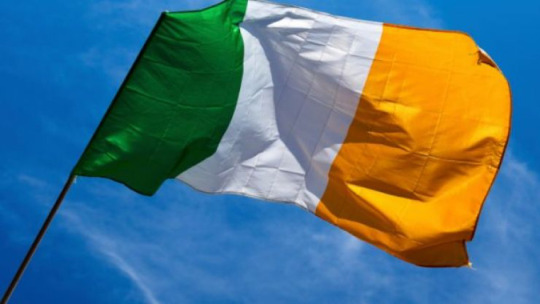
View On WordPress
#Catholic#Dublin#France#Green#Ireland#Irish History#Irish Tricolour#Orange#Protestant#Thomas Francis Meagher#Waterford#White#Young Irelander Party
14 notes
·
View notes
Text


This week 175 years ago, back in 1848, the Irish flag was first unveiled and hoisted on the Mall in Waterford, Ireland.
Created by Thomas Francis Meagher a skilled orator and statesman who later went on to become the first acting governor of Montana.
Often represented as green, white and gold the Irish flag is in fact green, white and orange - in Meagher's own words: "The white in the centre signifies a lasting truce between the 'Orange' and the 'Green', and I trust that beneath its folds the hands of the Irish Protestant and the Irish Catholic may be clasped in generous and heroic brotherhood."
The 7th of March 2023 marks 175 years since the Irish flag was first flown.
#ireland#irish#irish flag#vsco#travel#ireland travel#thomas francis meagher#irish tricolour#green white and orange#vscocam#photography#photographers on tumblr#waterford#history#panoramic ireland
70 notes
·
View notes
Text
I've been doing research into rose dugdale for reasons [not trying to dox myself] and I found out that in lieu of flowers for her funeral she urged ppl to donate to the Palestinians medical relief fund back in March.
#she also apparently died wearing a palestinian flag bracelt along with an irish tricolour one#idk why this detail just fucking hit me#it doesnt suprise me as she fucking hated colonalism#but
0 notes
Text
see when everyone is sosososo nice to me. craziest thing in the world…..
#everyone in this school I’m subbing in atm is SO NICE#kids were designing their own planets today and at least 6 of them just did the irish tricolour sososo funny to me
1 note
·
View note
Text
I just popped by to announce that I live in each and every one of the Irish tricolours on this man’s shirt. Especially the one on his right wrist which is not visible.
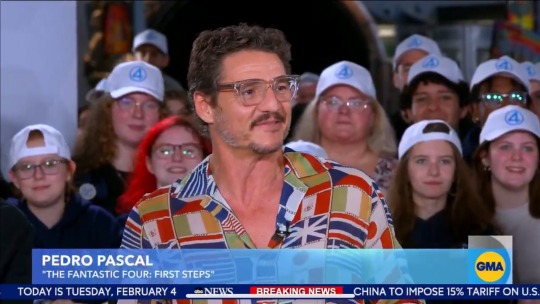
Baby out here looking like a Marshall Aid propaganda poster from 1947 😍

#pedro pascal#i am just out of teaching a long lecture#my brain is addled#saw those little Irish flags and nearly lost my shit#anyway I’ll be more coherent in a bit dear god#you know this shirt has matching pants#he could have gone full international pyjama party
39 notes
·
View notes
Text

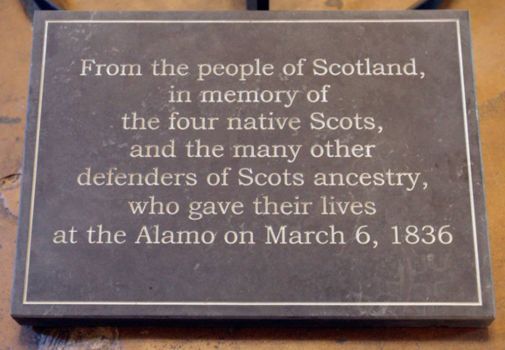

23rd February 1836 saw the first day of the Siege of the Alamo.
I think a most of us grew up watching the film and John Wayne as the eponymous "hero" Davy Crockett, but did you know there were at least four Scots born men there during the siege?
The four known Scots were Richard W Ballentine, John McGregor (piper), Isaac Robinson and David L. Wilson many of men were of Scots ancestry among the defenders.
The Alamo, according to what I have read, is the busiest visitor attraction in America and has inspired hundreds of books and more than one Hollywood film. According to local legend, Crockett endeavoured to maintain the spirits of his men on the eve of battle by playing on his fiddle. He knew, and they knew, that they all faced certain death, but often ignored is the fact that accompanying him on the bagpipes was John McGregor.
Inside the church on the Alamo site stand the flags of all the countries and states which lost men at the battle. These include the Scottish saltire, the Irish tricolour and the Welsh dragon, as well as the flag of St George.
Davy and Jock took to their respective instruments it is also note that they sung songs to keep their spirits up, one of those songs was a rendition of Rabbie Burns song Green Grow the Rushes O. Now there is one legend that that the song, sung by the dozens of soldiers in the fort of Scottish heritage, is the reason that Mexicans use the term "Gringo" Think about it, can you imagine the Spanish speaking Mexicans outside the fort listening to the besieged men singing the song "....I'll sing you two-o Green grow the rushes-o...." Well it's one version, and why not! This might be ridiculed by some, but the epic film I spoke about, with the late great John Wayne, was also ridiculed for its inaccuracies almost 60 years ago, so why not indeed.
One fact we know though is that there is a stone in the Texas city of San Antonio remembering all those years ago the four Scottish natives who died at the fort.
20 notes
·
View notes
Photo
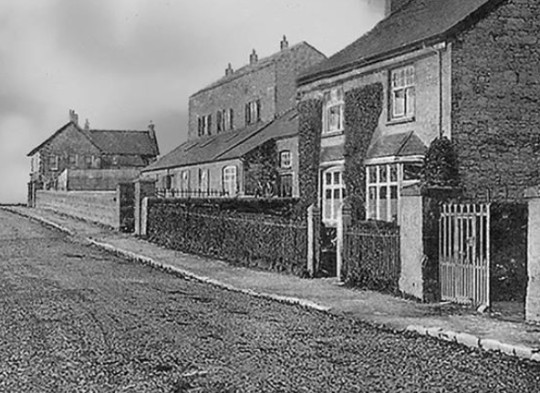
On this day, 16 May 1920, workers at Knocklong creamery in County Limerick declared a soviet (workers' council) and established workers’ control of production. They prepared for the takeover by arranging deals for milk with local farmers and contracts to sell their butter with retailers. They hoisted a red flag and an Irish tricolour and for five days they continued production under the slogan “We make butter not profits.” They returned control to the owners in exchange for reduced hours, better pay, and the replacement of a hated manager. The success of their revolt inspired similar actions by employees at other businesses owned by the Cleeves family, including in Bruree, where a soviet was declared in 1921. More information, sources and map: https://stories.workingclasshistory.com/article/8816/%E2%80%9CWe-make-butter-not-profits%E2%80%9D Pictured: the old creamery https://www.facebook.com/photo.php?fbid=626885839484635&set=a.602588028581083&type=3
119 notes
·
View notes
Note
for the ask game 19, 22, 26
thank you very much for the ask from the i'm not from the states ask game, anon!
now... i'm not sure if you did this intentionally or not... but these are the bag of worms questions...
19. do you like your country’s flag and/or emblem? what about the national anthem?
there are four flags [flegs] at play here [clockwise]: the union flag; the ulster banner; the st patrick's saltire; the irish tricolour flag.


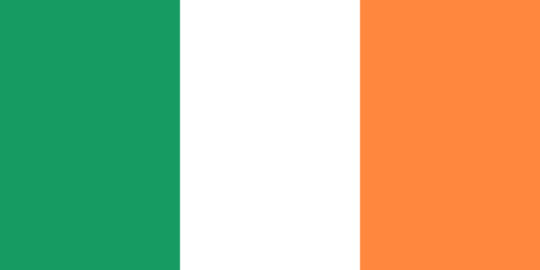
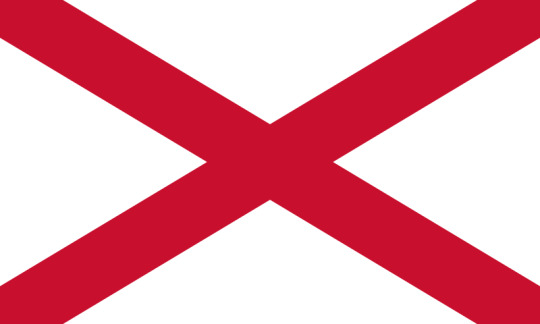
in terms of aesthetics, i am sorry to say that the union flag slaps. great colour scheme. jazzy design.
but in terms of what these flags mean... well. this is northern ireland. so they all mean something sectarian. and so i would certainly say that i like the irish flag - in that i know i'm unlikely to be attacked if i'm in an area where it's flying. that is very much not the case in areas where the union flag or the ulster banner are knocking about.
do i like that this is the case? no. and while my national sympathies are considerably more irish than british, i find our flag culture both insufferable and one of the main contributors to the continuation of the sectarian divide. it's obviously a bit kumbaya to suggest that a neutral flag might make any difference... but it couldn't hurt...
in terms of the national anthems, i never have any real cause to sing any [and the sectarian context is the same] so we're going purely on which slaps the hardest:
amhrán na bhfiann [a fucking banger!!]
ireland's call [slightly cringeworthy in its earnestness, but it does bang]
god save the king [the tune is unforgivably dull, but the lyrics genuinely go really hard - especially the discontinued ones about crushing the scottish and confounding popery.]
the londonderry air [this is what we're going with? the welsh have land of my fathers and this is what we're going with?]
22. what makes you proud about your country? what makes you ashamed?
the peace process.
because my answer to the second half of this question would be enduring sectarianism - and, specifically, enduring casual sectarianism. but i am also well aware that the flippancy younger people [especially those born after 2000] speak about the sectarian divide with is something which has only been made possible by the security of peace. it's easy for the irish women's football team to sing "up the ra" when the only thing that'll happen to them is some pearl-clutching from the press and a slap-on-the-wrist fine. thirty years ago, things would have been really quite different...
the peace is imperfect. it is fragile. it has been treated with utter disregard by the british state. the extraordinary work - especially that of the british politician mo mowlam - to bring it about has faded into an easy linear story, whose stars are tony blair and bill clinton. it has not caused complete justice to be done. it has not caused sectarian violence to vanish overnight - there are stories which emerge weekly from the city in which i live about some sort of sectarian crime.
but these stories make it into the papers because they are proportionally uncommon now. and i don't think we need to lose sight of that.
i was born in the early 1990s. i was at primary school when the good friday agreement was signed. and yet, despite the relatively few years i spent in a northern ireland at war, i can still remember roadblocks and police dogs and my dad checking under the car and bomb drills and being heckled as i walked to school and having to have your bags searched before you could enter shops and my mam crying on the day the omagh bombing happened. my siblings, born in the 80s, remember these things even more viscerally. my father, born in the 1950s, remembers having guns pointed at him by british soldiers while walking down the street, or being stopped and searched on spurious grounds by the royal ulster constabulary, or a call coming in to evacuate a place before a bomb went off.
my nieces and nephews, all born after 2000, have never experienced any of this. if they are naive about the true horrors of sectarianism... then we should reflect on how lucky that makes us.
26. does your nationality get portrayed in hollywood/american media? what do you think about the portrayal?
answered here.
10 notes
·
View notes
Text
The young rioter surveyed the scene. A bus and a car blazed on O’Connell Bridge while masked groups marauded across the city centre looting shops, attacking police and shooting fireworks, turning the air acrid.
A police helicopter hovered and officers with shields and batons were assembling at the far end of O’Connell Street but the heart of Dublin, for now, belonged to the young man in a black hoodie who started to dance in the glow of the flames.
Comrades cheered as he punched the air and jigged to a soundtrack of breaking glass, shouts and sirens. He held his arms aloft like Rocky and paused, mesmerised by the mayhem. “Beautiful,” he said. “Fuck-ing beautiful.”
For other people in Ireland and elsewhere who saw images of Thursday’s anarchy it was the night Dublin went mad. For participants it was the night the city came to its senses – that here was an overdue venting of rage, a reckoning.
Ireland, according to this narrative, has opened the floodgates to foreigners with no controls or checks, leaving rapists and murderers to prowl the streets, and no one – not the government, not opposition parties, not the media, not the police – is taking it seriously.
So when social media rumours attributed a horrific stabbing attack on three children and a creche worker to a foreigner – Algerian, Moroccan, Romanian, versions varied – groups descended on Parnell Square, the scene of the crime, and decided to unleash chaos.
“People need to fight for this country,” said Samantha, a 27-year-old mother, as masked youths clashed with police attempting to retake Eden Quay along the River Liffey. “I’m not racist; I don’t mind people coming in if they respect Irish people. But the likes of the toerags coming into this country – they’re not vetted and are causing havoc.”
The unfolding scenes, in contrast, were legitimate havoc, a corrective to a political establishment impervious to previous protests over rising numbers of asylum seekers, said Samantha. “When we do things peacefully we get ignored.” She had left her five-year-old at home without dinner in order to join the revolt, she said. “I’m out here fighting for my country. We shouldn’t have to do this.”
Others echoed the refrain: to make Ireland safe, wreck the capital.
“It’s not right but it had to be done. The government is not listening,” said one man in his 20s, a bystander rather than a looter. “This isn’t against foreigners. We were the first emigrants. Immigrants are driving our buses, cleaning our hospitals – we need them. But they need to be vetted.”
Ireland’s demography has been transformed in recent decades as a booming economy reversed the historical flow of emigration. A fifth of the 5 million people now living in Ireland were born elsewhere. A recent increase in refugees from Ukraine and other countries fuelled a backlash amid concern over a housing shortage and straining public services. The number housed by the state jumped from 7,500 in 2021 to 73,000 in 2022.
Amid the destruction on Thursday night there was some linguistic nuance, with “non-national” usually preferred to “foreigner”, and “unvetted” or “unregulated” preferred to “illegal”, and an aversion to the label “far right”.
There was nothing subtle about the targeting of police. Bottles, bricks, fireworks and other missiles rained down on officers, many of whom lacked helmets and shields. The crowd cornered and attacked isolated officers, leaving several injured. Eleven police vehicles were damaged.
Journalists too were unwelcome and photographers had to conceal cameras. “He’s with the Guardian,” a man in his 60s, holding a tricolour, shouted. Younger, hooded men formed an intimidating cluster. The worst sin was to be with RTÉ, the national broadcaster, or the liberal Irish Times, which were accused of cheering the “replacement” of Irish people by new arrivals.
Many onlookers were appalled. “It’s heartbreaking for Dublin, for Ireland, for Europe,” said Matthew Butler, 28. A 53-year-old postman who gave his name only as John expressed fury. “Just a bunch of scumbags out to wreck Dublin city. The gardaí [police] should have free rein to beat the shit out of them.”
On Friday, Leo Varadkar, the taoiseach, said the rioters had shamed themselves and Ireland. “I want to say to a nation that is unsettled and afraid: this is not who we are – this is not who we want to be – and this is not who we will ever be.” The Garda commissioner, Drew Harris, blamed the disturbances on a “lunatic, hooligan faction driven by far-right ideology”.
The mob had diverse motives. Some belonged to fringe political groups and were veterans of protests against refugee centres. Some were opportunistic gangs that seized the chance to loot sportswear and alcohol. Others came for the spectacle and the chance to post dramatic footage on social media.
All, however, scorned the idea that Ireland is a safe, stable society. The economy is at full employment and the state is flush with tax revenue but their social media feeds depict a country overrun with “non-native” predators such as Jozef Puska, a Slovak man convicted earlier this month of murdering a teacher, Ashling Murphy, in 2022. As the night wore on, an unfounded rumour spread that one of the children in the Parnell Square attack had died.
It did not seem to matter that one of the people who stopped that attack was a Brazilian Deliveroo rider, Caio Benicio, and that Dublin gangs have assaulted numerous South American couriers in recent years.
Chilling threats of assaults against immigrants were made on a WhatsApp group titled “enough is enough”. “Everyone bally [balaclava] up, tool up,” said one man. “Let’s show the fucking media that we’re not a fucking pushover, that no more fucking foreigners are allowed into this poxy country.”
However, the mob targeted property and police rather than foreign and non-white bystanders, who watched in bewilderment.
As police gradually regained control James, a 33-year-old labourer, confronted a phalanx of shields on Burgh Quay, drawing cheers from others who hurled missiles. After being sprayed in the face, James staggered back to Butt Bridge where a Brazilian man, who had experience of being teargassed in his home country, offered recovery tips.
James thanked him but in an interview said “unregulated” arrivals were ruining Ireland. “We’re rammed to the gills with foreigners doing mad shit. You can’t do this to Irish people. I’m getting out of this country, I’m burning rubber. It’s not safe to walk around here.”
Mohammed Gaber, 27, an accountant who moved to Ireland from Sudan and is now an Irish citizen, came into the city centre to check on his sister, Ebba. He lauded his adopted home but worried about what the riot might augur. “Irish people are so welcoming. I’ve never experienced any discrimination. But this is crazy. This is the first time that I feel that there is something big.”
With roads sealed off and smoke pluming over Dublin, Ebba, 33, was blunter. “This is terrifying.” She was not sure of reaching her job as an emergency doctor at a police station.
9 notes
·
View notes
Text
As a person from a country which threw off an evil empire only to descend into instant civil war followed by theocratic oppression I actually really appreciate the insinuation, in Mando S3 E3, that the New Republic isn't all that great.
'Andor' went HARD on its parallels to Irish history. An incitement to rebellion occuring at a funeral within a culture which takes funery custom very seriously is not unique to us (in fact no revolutionary process is unique to us) but it does feel very true to Irish history. Gilroy was inspired by 1970s IRA funerals in the North, or so he has said, but to me it was more reminiscent of the funeral of Jeremiah O'Donovan-Rossa in 1915, or the funerals of the early hunger strikers in the period between the 1916 Rising and the beginning of the War of Independence in 1919. These, especially the 1915 funeral wherein rebel leader Padraig Pearse gave a rousing speech which ended 'Ireland unfree shall never be at peace', are considered by historians as pivotal moments for the shift in sentiment towards the ousting of British Imperial control in Ireland.
It is so resonant, then, that like in the history of my own culture the New Republic in Star Wars shows itself to be by turns incompetent, repressive, and undeservedly smug about its own project.
This often happens in revolutions. The problems which both predate and are caused by Imperial control do not simply go away because you took down the Cogwheels or the Butcher's Apron. (For those who don't know, that's the Union Jack).
Do I hate the thought that Cassian Andor and Jyn Erso may have died for something that still wouldn't have aligned with their ideals had they survived? Of course I do. Just as I hate how James Connolly died for the same reason in the history of my own country. Do I hate the idea that my beloved Princess-Senator-General Leia Organa struggled in vain against a government that SHE WAS INSTRUMENTAL IN CREATING only to have to turn around and start rebelling again because things went to shit? Yes. I hate it. Just as I hate how my country betrayed the heroines of our revolution (Markievicz, Gonne, Sheehy-Skeffington, Lynn, Skinneder, Farrell, Ffrench-Mullen and others) by ousting them from politics and curtailing their rights. I hate these facts of history, but I love that they are reflected in Star Wars.
I love that the New Republic sucks. I love it because it feels so fucking true to life.
The sacrifices that the rebels made, both Fadó Fadó in Éireann and A Long Time Ago In A Galaxy Far Far Away, were not worthless. Their ideals were good. They absolutely should have done what they did. Empires, British or Galactic, SHOULD be overthrown. Just because my country turned into a place where Catholic clergy traumatised generations through sexual predation, unjust incarceration for moral crimes, and the stealing and sale of babies approximately three minutes after the Tricolour went up and the Union Jack came down doesn't mean that we shouldn't have rebelled at all.
The question of 'what do you do with your revolution once you've got it' should loom large over any revolution. It is evident that the maintenance of certain statuses quo just lays the ground work for the wars to come.
Star Wars onscreen usually works in broad strokes. The minutiae are largely left to the writers of the novels, and to a greater extent those of us who write fic and meta, to create and interpret. This particular broad stroke, that the New Republic maintains certain injustices from the time before, is deeply compelling and I hope it's something that the canonical story and those of us engaged in transformative practice with it can continue to explore.
#star wars#the mandalorian s3#the new republic#star wars meta#galactic musings#mando s3 e3#the mandalorion spoilers
36 notes
·
View notes
Text
#OTD in 1848 – First unveiling of the Irish Tricolour by Thomas Francis Meagher at 33 the Mall in Waterford city.
The Irish Tricolour flag was first flown publicly by Waterford man and Irish-American Patriot Thomas Francis Meagher in his native city at the Wolf Tone Confederate Club at 33 The Mall, Waterford on 7 March 1848. On the 15th of April he presented a fabulous version of the Tricolour made from the finest French silk to the citizens of Ireland. He said: ‘I trust that the old country will not refuse…

View On WordPress
#33 the Mall#France#History of Ireland#Ireland#Irish History#Irish Tricolour#Thomas Francis Meagher#Waterford#Waterford city
4 notes
·
View notes
Text
National Flags Flown at an Orange Parade:
I was watching the tercentenary Orange March (1990), that occurred in Belfast, Northern Ireland, on YouTube. My own county, “The County Monaghan True Blues”, was represented.
At an Orange march, at the top of the parade, the national flags of participating countries are flown. However, conspicuous by its absence was the Irish Tricolour, to represent Southern Irish Orangemen, like the “True Blue” Orangemen from my own county.
Southern Ireland is represented at an Orange March by the Northern Ireland flag, or, more accurately: the Flag of the Stormont Executive (1921–1972), which I find deeply ironic.
Plenty of organisations—the GAA, being one—use the Tricolour to inacurately represent a thirty-two county Ireland, and so I am not offended, in the slightest, if the Orange Order, in a retributive act of vexillological belligerence, uses the Northern Ireland flag to represent Southern Ireland.
Also, the Tricolour was effectively a banned symbol in Northern Ireland under the Flags and Symbols Act (1954), and so the Orange Order probably could not, in times past, fly the Tricolour, in Belfast, to represent Southern Ireland, even if it wanted to.
I wondered had this protocol changed, since the end of The Troubles: do the Orange Order, today, fly the Tricolour in honour of participating Southern Irish Orangemen, and I don't think that this protocol has changed. It would be interesting if the Orange Order did begin to fly the Tricolour at their Belfast March on the 12th. One wonders if they can fly other foreign flags, then why not the Tricolour?
I checked out: The Orange Order: a Tradition Betrayed (2006) by Brian Kennaway, from Monaghan Library. My being in my late 30s, I actually remember ‘The Drumcree Debacle’, which is one of the chapters in Kernaghan’s book.

Figure 1: One of the plates in Kennaway’s book. Depicted is a pre-partition Orange Banner, with the Irish Gaelic inscription—in Celtic Type—‘Oidhreacht Éireann’ /ˈɔɪ.rɔxtʰ ˈɛˑ.rɑn/, which means: ‘Heritage of Ireland’.
A County-Monaghan Protestant from Clones, Darach MacDonald, also wrote The Sons of Levi (1999) on the Orange Order.

Figure 2: A photo of the book: The Sons of Levi (1999) by Brian Kennaway.
I also ordered Ruth Dudley Edwards’s The Faithful Tribe (1999) on the Orange Order.

Figure 3: Ruth Dudley Edwards’s book: The Faithful Tribe (1999).
2 notes
·
View notes
Text
You guys dont understand the real agony and desire of the True Irish Republican. One day i was walking home and i saw a tricolour and the Palestine flag flying eclipsed by the August sunset and i nearly teared up thinking about the scenario where a border poll vote finished on the side of unity. Okay maybe im just a fucking loser but still
3 notes
·
View notes
Text
Notes on Colour Theory Seminars
Pantone
Pantone standard colour matching system, used by over 10 million designers, ensures standardisation
Pantone uses the CMYK process
As of 2023 there are 2390 colours in the Pantone system
By pairing grey as an accent with other colours it increases the viewers perception that the other colour has a metallic taint

My favourite Pantone colours of the year
2022, Very Peri, 17-3938
2019, Living Coral, 16-1546
2017, Greenery, 15-0343
2014 Radiant Orchid, 18-3224
2012, Tangerine Tango, 17-1463


Use of Colour in the Real World
London Underground uses coloured lines that are all horizontal, vertical or diagonal at 45 degrees to create a simplified map of all the stations and stops that’s easier for the user to navigate
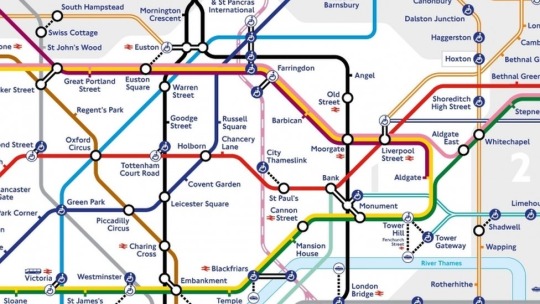
Road Signage
Brown indicates areas of historical interest, white for place names, yellow for roads
In the late 1950s, Jock Kinneir and Margaret Calvert, two British graphic designers, created the signage from the UK motorways and created new fonts for them. This signage was later adopted by Ireland too.
Contested Spaces
Derry is a prime example of a contested space in Ireland. On the Bogside (mainly catholic area) of Derry, the tricolour is widely used as a symbol of Irish nationalism
While on the Waterside, the Loyalist (Protestant) area, the use of Union Jack colours and orange dominate the area.

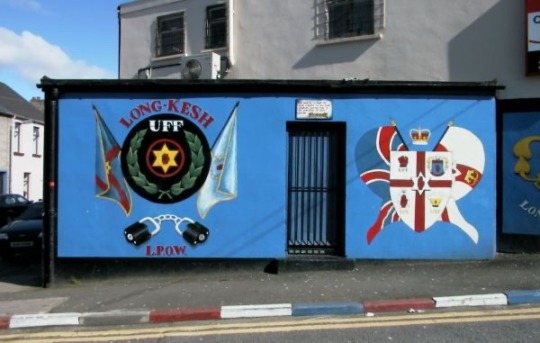
Our postboxes were originally red under British rule, 1922 when we gained our independence, painted green
Use In Fine Art
International Klein Blue
Developed by Yves Klein
Heavy reliance on ultramarine
Copyrighted the colour in 1958
Used Klein Blue as a central component in his works
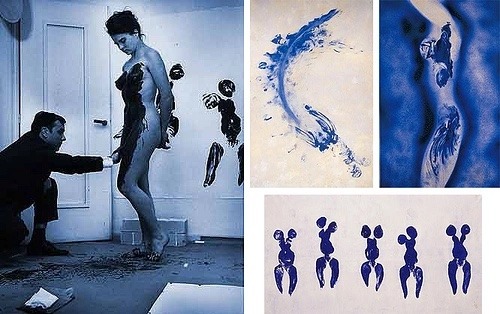
Vantablack
absorbs 99.96% of light
When lights hits the pigment it becomes trapped inside it
Developed for military purposes by the company NanoSystems
Anish Kapoor bought the colour from NanoSystems
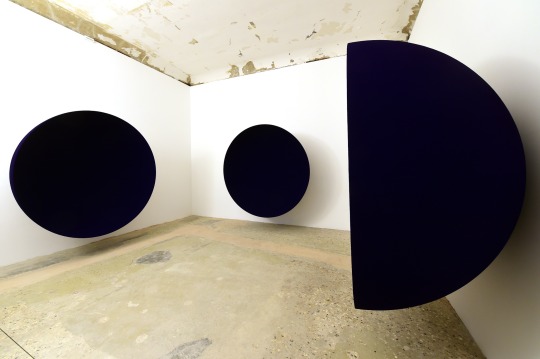
The Worlds Pinkest Pink
In 2016 Stuart Semple created the world’s “Pinkest Pink” in retaliation to Kapoor buying the rights to Vantablack
Semples pink is available to everybody except Kapoor, who is banned from buying it
Must sign a contract when you’re buying it that you’ve no affiliation with Kapoor
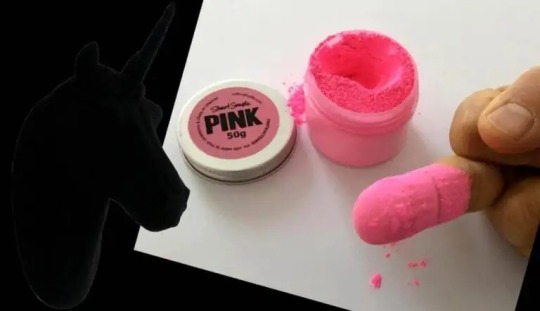
2 notes
·
View notes
Text

Cutlery from Michael Collins' last meal.
This cutlery used by Collins at his last meal in the Eldon Hotel in Skibbereen on August 22, 1922, hours before the ambush at Béal na mBláth. The knife, fork and spoon were stitched to a green silk shamrock to symbolise Ireland, flanked by a green flag with a harp and a tricolour.
The hotel manager held onto the cutlery and after Michael Collins' death, it was presented to Kitty Kiernan, who was well known as Collins' fiancée. Following Kitty's untimely death in 1945, the cutlery was passed on to her sister Maud. Later, it was passed down through Maud's husband's family, Gearóid O'Sullivan, who raised the Irish flag over the GPO during the 1916 Rising.
#irish studies#meanwhile in ireland#michael collins#but not the astronaut#who is also dead#and also never walked on the moon
6 notes
·
View notes
Text
Óró 'sé do bheatha 'bhaile
Oh roh, welcome home! Mac Gineadh na hÉireann!
Curse Tumblr's 20mb, I really need to start using my Filckrr much more.

Dublin was such a beautiful city, what a tragic that I must from it part so soon. Tumblr's 20mb is more annoying than ever but I got some good shots under it!

The flag of Leinster, boys. Quite lucky to get this shot.

Gaeli iad féin is ní Frainc' ná Spáinnigh. May our tongues never be forgotten!

The Tricolour stands beautifully over what once was Sackvile street. Defiant evermore to the British foe.

And over the GPO it still waves like it did in 1916, over a hundred years ago over a bright, beautiful sky.

Just a nice view from O Connell bridge.

As a very proud son of Ulster, it's always a pleasure seeing the flag breeze kindly in an Irish sky.
0 notes